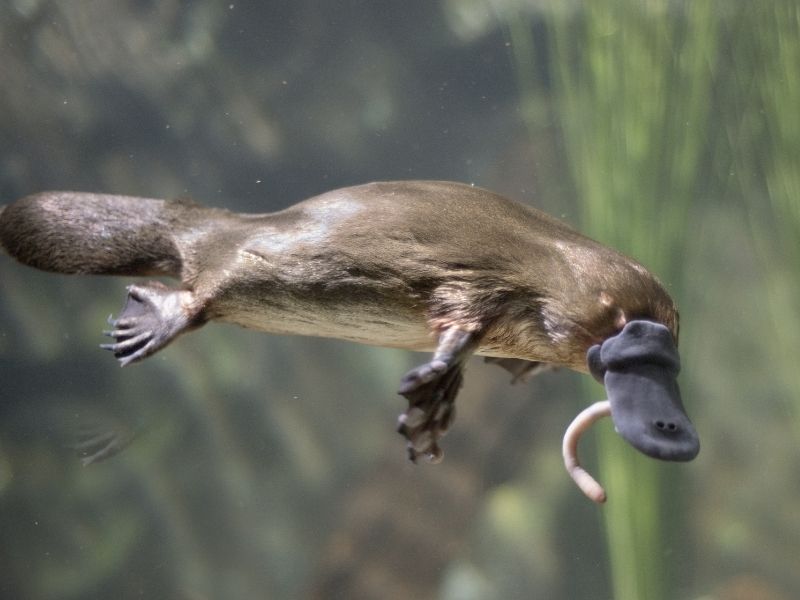Lectura en inglés para niños: 10 amazing facts about platypuses
10 hechos sorprendentes sobre los onritonrincos en inglés para aprender el idioma de forma divertida
Publicado por Alba Caraballo, editora de Conmishijos.com
Creado: 1 de junio de 2023 16:06 | Modificado: 9 de abril de 2025 08:22
Te invitamos a leer 10 datos asombrosos sobre los ornitorrincos: 10 amazing facts about platypuses. Una lectura muy divertida e interesante para niños de Primaria, de la mano de la revista para aprender inglés I Love English Junior (ILEJ 121 (enero-febrero 2022).
Los niños conocerán datos curiosos mamíferos. Además, aprenderán nuevo vocabulario y practicarán la lectura en inglés.
Ver +: Lecturas para niños en inglés
10 amazing facts about platypuses: Lectura en inglés para niños

1. The platypus is one of the most unlikely animals found in nature. Some of its rare features includes webbed feet, bill of a duck, the tail of a beaver and the body and fur of an otter.
2. The platypus is a mammal, but it lays eggs. Along with the echidna ? which also lives in Australia ? it is the only animal that does this.
3. The platypus was once large as a dog, but the version that exists today is comparable in size to a house cat.
4. Platypuses feed their young through lactation, but in a very different way. They can?t lactate through their nipples as they don?t have. Instead, the platypus secretes milk via pores throughout the skin.
5. Platypus babies are born with teeth, but they do not last long as they drop out while the mammal is still young. For this reason, the platypus eats gravel ? so that it can chew food.
6. Although it has no teeth, the platypus is completely carnivorous. It finds food under water ? molluscs, insects, snakes, larvae and worms. The platypus has to eat around 20% of its own weight every day, so it spends about twelve hours a day looking for food.
7. The platypus uses electric fields to locate objects, catch prey and "see". This is called "electrolocation". These electric fields are created via muscle contractions.
8. The platypus is an excellent swimmer thanks to its flat head and flat body. It spends a lot of time in the water. When it?s not swimming, it goes and rests in its burrow on the riverbank.
9. Males have venom in their hind feet. They sting to defend themselves. The venom is powerful enough to kill small animals. It is not lethal for humans, but it is very painful.
10. The platypus does not have a stomach and does not need one either. Instead, it simply uses its esophagus and intestines to digest. This is because platypuses don?t include any food items that need complex digestion.
Artículos relacionados
Estaciones del año en inglés. Ejercicio para niños (Seasons of the year)
Con este ejercicio sobre las estaciones en inglés para niños, tus hijos o tus alumnos podrán repasar lo que han aprendido en el colegio. Esta ficha de inglés:...
Ejercicios en inglés para niños: divertidas fichas para imprimir
Ejercicios en inglés para niños que puedes imprimir para que el niño realice en su tiempo libre. Son divertidos y amenos, por lo que será divertido repasar y...
34 trabalenguas en inglés para niños
Hemos reunido 34 trabalenguas en inglés para niños, incluida la traducción al español, con la que pueden practicar y mejorar su pronunciación en inglés.
Inglés para niños: 10 amazing facts about eagles
Te invitamos a leer 10 datos asombrosos sobre las águilas: 10 amazing facts about eagles. Una lectura muy divertida e interesante para niños de Primaria, de la...
Animales del bosque en inglés. Ejercicio de inglés para niños
Con este ejercicio de inglés para niños, los más pequeños de la casa podrán conocer los nombres de los animales del bosque en inglés. Esta ficha escolar tiene...
Podcasts de la revista para aprender inglés: I Love English Junior
La revista para que los niños aprendan inglés: I Love English Junior, nos invita a escuchar una serie de podcast que ayudarán a los niños a familiarizarse con la...
Comentarios
¡Sé el primero en comentar!


















